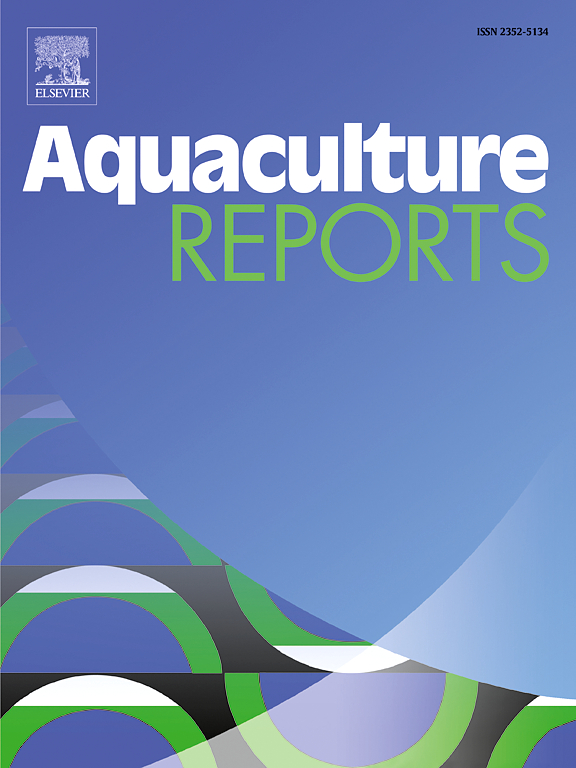Impact of dietary mulberry (Morus alba) fruit extract on the growth performance, skin color, and immune response of fancy carp (Cyprinus carpio)
IF 3.2
2区 农林科学
Q1 FISHERIES
引用次数: 0
Abstract
Supplementing aquafeed with functional ingredients can improve fish immunity, growth performance, and survival rates. Morus alba var. Chiangmai is a medicinal plant recognized for its antioxidant, anti-inflammatory, and antimicrobial properties, and it is rich in flavonoids, including rutin, quercetin, kaempferol, and anthocyanins. The present study aimed to investigate the effects of Mulberry (Mull) fruit extract on the growth performance, coloration, immune response, gene expression, and liver histology of fancy carp (Cyprinus carpio). We conducted an 8-week growth trial on fancy carp using four different dietary groups: commercial, control, Mull1 %, and Mull2 %. The results showed that fish fed Mull1 % exhibited improved growth performance (FBW, WG, ADG, FCR) compared to control and Mull2 % groups (P < 0.05), although survival rates did not differ significantly among groups (P > 0.05). Color analysis (CIE Lab*) was conducted at three positions on the fish body (dorsal fin, pectoral fin, and caudal fin). The results revealed that fish on the Mull1 % diet had significantly increased red (a*) and yellow (b*) coloration at the dorsal fin and caudal fin positions, without affecting lightness (L*) (P < 0.05). In contrast, Mull2 % diet had no significant impact on these color parameters (P > 0.05). Immunological evaluation showed that Mull1 % enhanced key immune markers such as CAT, LZM, MPO, GPx, and GRD while reducing MDA content in the liver (P < 0.05), suggesting an improved immune response. Gene expression analysis indicated upregulation of il-1β, cat, and vtg in the Mull1 % group, while hsp70 expression was highest in the Mull2 % group, highlighting a dose-dependent effect on immune and stress response genes (P < 0.05). Liver histology revealed a normal structure across all groups, indicating no adverse effects from the diets, including those with mulberry supplementation. In conclusion, 1 % mulberry extract supplementation improved growth, coloration, immune response, and gene expression in fancy carp without negatively affecting liver histology, making it a promising dietary additive for ornamental fish.
求助全文
约1分钟内获得全文
求助全文
来源期刊

Aquaculture Reports
Agricultural and Biological Sciences-Animal Science and Zoology
CiteScore
5.90
自引率
8.10%
发文量
469
审稿时长
77 days
期刊介绍:
Aquaculture Reports will publish original research papers and reviews documenting outstanding science with a regional context and focus, answering the need for high quality information on novel species, systems and regions in emerging areas of aquaculture research and development, such as integrated multi-trophic aquaculture, urban aquaculture, ornamental, unfed aquaculture, offshore aquaculture and others. Papers having industry research as priority and encompassing product development research or current industry practice are encouraged.
 求助内容:
求助内容: 应助结果提醒方式:
应助结果提醒方式:


